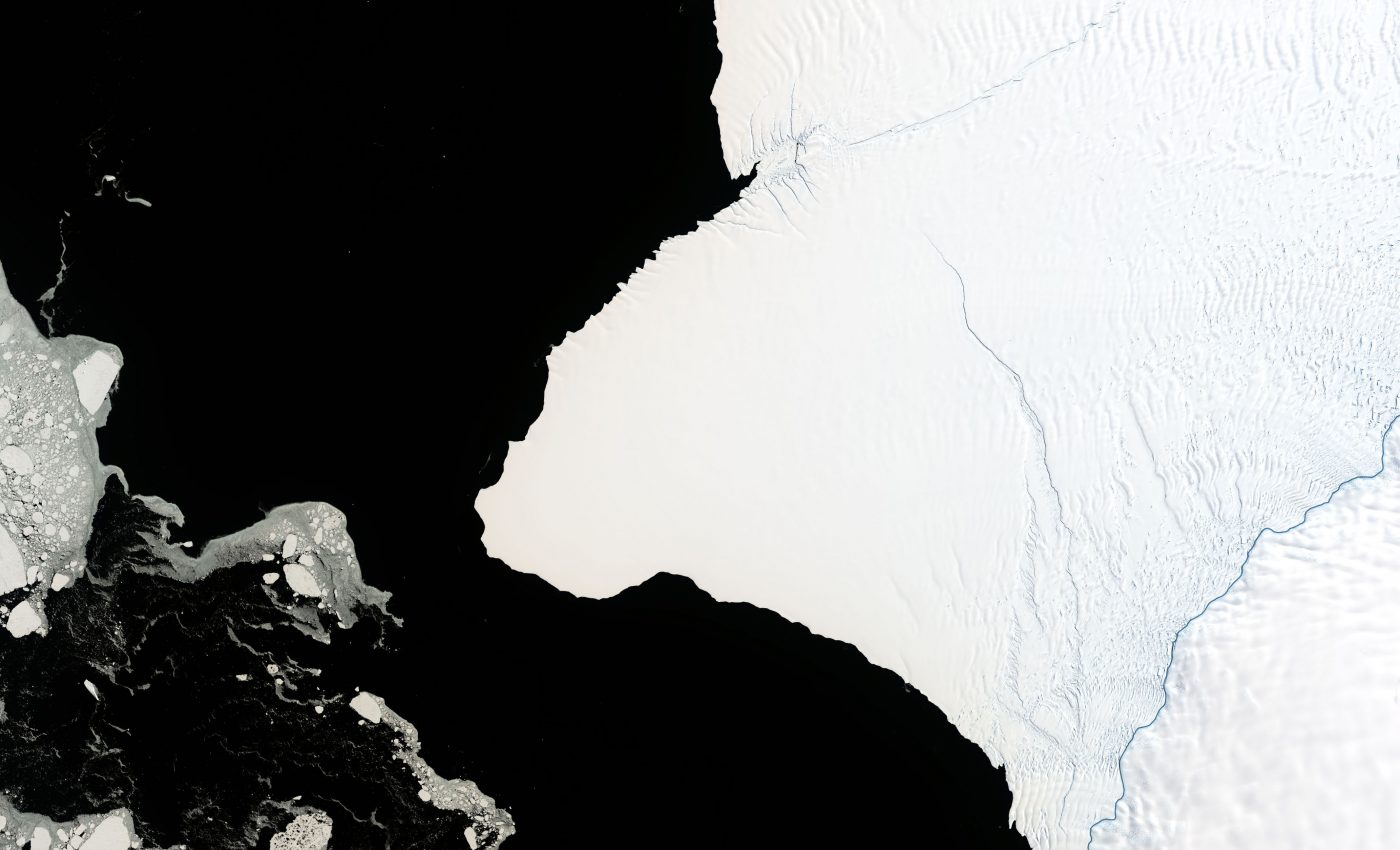
Iceberg twice the size of New York City to break off Antarctica
An iceberg twice the size of New York City is about to break off the Brunt Ice Shelf and the National Aeronautics and Space Administration (NASA) Earth Observatory has started a countdown to the calving event.
Landsat satellite imagery shows two cracks, the Halloween crack which first appeared in 2016 and another crack running perpendicular to the Halloween crack, accelerating northward at a rate of about four kilometers per year.
When the two cracks meet, the massive iceberg will be released from the ice shelf.
The Brunt Ice Shelf is a 400-foot-thick ice sheet where recently the Halley Research Station operated by the British Antarctic Survey (BAS) had to be relocated due to the Halloween crack.
What is unusual about this calving event is the way the second crack suddenly started speeding northward after remaining stable for 35 years.
The Halloween crack is growing eastward from the McDonald Ice Rumples, and where the second crack meets the Halloween crack near the rumples will determine how the iceberg calves from the shelf. The rumples are formed by the way ice flows over the rising bedrock in that area.
“The near-term future of Brunt Ice Shelf likely depends on where the existing rifts merge relative to the McDonald Ice Rumples,” said Joe MacGregor, a glaciologist at NASA’s Goddard Space Flight Center. “If they merge upstream (south) of the McDonald Ice Rumples, then it’s possible that the ice shelf will be destabilized.”
The cracks and potential calving event are raising concerns about the Halley Research Station which has already had to be relocated because of instabilities along the ice shelf.
“The station is designed to be relocatable. In 2017 BAS successfully relocated the station’s eight modules 23km (14 miles) upstream of a previously dormant ice chasm,” a spokesperson from the British Antarctic Survey told Newsweek. “The frequency of relocation depends very much on how the ice behaves in the future. Our long-term ice monitoring project is designed to alert us of any significant change in the ice.
—
By Kay Vandette, Earth.com Staff Writer
Image Credit: NASA Earth Observatory












